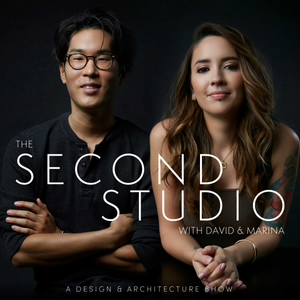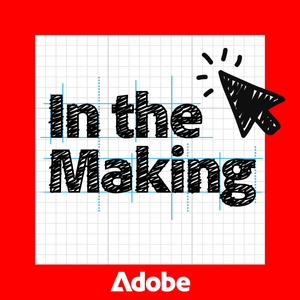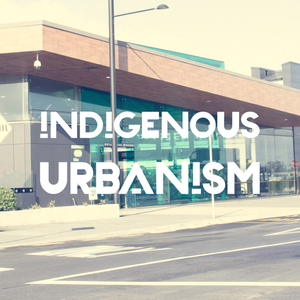
Tāmaki Makaurau Cultural Landscapes Pt 2
07/26/18 • 25 min
EPISODE SUMMARY: In part two of our story on Tāmaki Makaurau cultural landscapes, we look at how mana whenua are working with Māori designers to re-shape the City to better reflect their unique identity and culture, and to create a distinctive sense of place that benefits us all.
GUESTS: Lucy Tukua, Bernadette Aperahama
FULL TRANSCRIPT:
Jade Kake: The rural to urban migration that began after World War 2 saw a generation of Māori flock to the cities. But mana whenua in Tāmaki Makaurau never moved to the City - the metropolis that is Auckland has grown up around them, historically without their participation and often resulting in the destruction of settlements and important sites.
In recent years, mana whenua participation in development has increased exponentially. Tools like Te Aranga have supported mana whenua to work collaboratively as part of project teams to creatively reinterpret their own narratives and histories, and to apply these to the construction of new buildings and landscapes.
Lucy Tukua: Tēnā tatou katoa, i tū ana, maua i runga i te maunga a Maungarei, te tihi maunga o Tāmaki Makaurau. E whariki nei, ngā maunga e maha, ngā maunga i rongonui o Tāmaki, i te taha nei, ko te Wai-o-Taiki, e rere atu ra ki te Waitematā. Āe, me mihi hoki ki ngā tangata ngā tūpuna, ngā wāhi tapu, kei waenganui. He uri o hau o Ngāti Paoa, Ngāti Whanaunga. I noho ana au e Papakura. Ko Lucy Tukua ahau.
JK: So we're standing here on top of Maungarei, looking out over the harbour and over the city, and it's a really beautiful clear, sunny day. So we've been very blessed with the weather. Could you tell me a bit about this place where we're standing, and what it means to you, and to your iwi of Ngāti Paoa?
LT: So Ngāti Paoa were at one point in time the dominant mana whenua iwi here in this particular area. The Pā site that they occupied is known as Mokoia Pā, which sits at the headland at the mouth of Te Kai a Hiku, the Panmure Lagoon. There were a number of Ngāti Paoa that resided here along the foreshore of the Wai-o-Taiki, and it was very well known for it's māra, for it's gardens. And Ngāti Paoa - in terms of their kaitiaki - was the taniwha Moko-ika-hiku-waru. So hence where Panmure Lagoon gets its name from - Te Kai a Hiku, shorted to Hiku, Moko-ika-hiku-waru. And, it's said that this kaitiaki used to corral fish into the Panmure Lagoon, and that's why it's called Te Kai a Hiku, the food bowl of Hiku.
As we know, the Tāmaki River, Te Wai o Taiki, was one of the important highways, State Highway 1 for our waka, back in the day, and also with the Tainui waka coming through this area, accessing the Manukau Harbour over the Otahuhu portage. It was a place where many lived, and interacted with other tribes. But also acknowledging that, Ngāti Paoa weren't the only occupiers of this area, and just acknowledge the other mana whenua in this area as well. I think in this day in age, a lot of people are really interested about the purakau and the cultural narratives of Māori, of mana whenua, and in particular, like the names of places and mountains and rivers. The harbour. You know, the beautiful story about Te Kai a Hiku. That was his food bowl.
Maungarei, about the sisters Reitū and Reipae. Like most good narratives, everybody's got their own story, but the story that I know is, so Reitū and Reipae, beautiful Waikato wāhine that were keen on a chief from up in the north. And so, they were on a mission to partner with this chief, and they summoned their kaitiaki, which was a manu. So this particular maunga is named after that event of them journeying up into the north, and coming here to Maungarei. So if we take that particular narrative, and the work that was done on the Auckland Transport project, the Panmure Station roofline represents the manu or the kaitiaki of those two wāhine.
JK: Tēnā koutou katoa
Nau mai haere mai ki te Indigenous Urbanism, Aotearoa Edition, Episode 6.
I’m your host Jade Kake and this is Indigenous Urbanism, stories about the spaces we inhabit, and the community drivers and practitioners who are shaping those environments and decolonising through design.
In part two of our story on Tāmaki Makaurau cultural landscapes, we look at how mana whenua are shaping the city to better reflect the culture and history of place, and to promote a more responsible and regenerative ongoing relationship with our environment.
We spoke with Lucy Tukua, nō Ngāti Paoa raua ko Ngāti Whanaunga. Lucy has been a driving force behind the application of the principles from a mana whenua perspective.
We met with Lucy at Panmure Station, which is in shadow of Maungarei and is part of the first stage of the Auckland Manukau Eastern Transport Initiative.
LT: In my capacity as the Environment Manager for Ngāti Paoa I was involved in the Panmure Station quite closely, and the mana whenua that were invol...
EPISODE SUMMARY: In part two of our story on Tāmaki Makaurau cultural landscapes, we look at how mana whenua are working with Māori designers to re-shape the City to better reflect their unique identity and culture, and to create a distinctive sense of place that benefits us all.
GUESTS: Lucy Tukua, Bernadette Aperahama
FULL TRANSCRIPT:
Jade Kake: The rural to urban migration that began after World War 2 saw a generation of Māori flock to the cities. But mana whenua in Tāmaki Makaurau never moved to the City - the metropolis that is Auckland has grown up around them, historically without their participation and often resulting in the destruction of settlements and important sites.
In recent years, mana whenua participation in development has increased exponentially. Tools like Te Aranga have supported mana whenua to work collaboratively as part of project teams to creatively reinterpret their own narratives and histories, and to apply these to the construction of new buildings and landscapes.
Lucy Tukua: Tēnā tatou katoa, i tū ana, maua i runga i te maunga a Maungarei, te tihi maunga o Tāmaki Makaurau. E whariki nei, ngā maunga e maha, ngā maunga i rongonui o Tāmaki, i te taha nei, ko te Wai-o-Taiki, e rere atu ra ki te Waitematā. Āe, me mihi hoki ki ngā tangata ngā tūpuna, ngā wāhi tapu, kei waenganui. He uri o hau o Ngāti Paoa, Ngāti Whanaunga. I noho ana au e Papakura. Ko Lucy Tukua ahau.
JK: So we're standing here on top of Maungarei, looking out over the harbour and over the city, and it's a really beautiful clear, sunny day. So we've been very blessed with the weather. Could you tell me a bit about this place where we're standing, and what it means to you, and to your iwi of Ngāti Paoa?
LT: So Ngāti Paoa were at one point in time the dominant mana whenua iwi here in this particular area. The Pā site that they occupied is known as Mokoia Pā, which sits at the headland at the mouth of Te Kai a Hiku, the Panmure Lagoon. There were a number of Ngāti Paoa that resided here along the foreshore of the Wai-o-Taiki, and it was very well known for it's māra, for it's gardens. And Ngāti Paoa - in terms of their kaitiaki - was the taniwha Moko-ika-hiku-waru. So hence where Panmure Lagoon gets its name from - Te Kai a Hiku, shorted to Hiku, Moko-ika-hiku-waru. And, it's said that this kaitiaki used to corral fish into the Panmure Lagoon, and that's why it's called Te Kai a Hiku, the food bowl of Hiku.
As we know, the Tāmaki River, Te Wai o Taiki, was one of the important highways, State Highway 1 for our waka, back in the day, and also with the Tainui waka coming through this area, accessing the Manukau Harbour over the Otahuhu portage. It was a place where many lived, and interacted with other tribes. But also acknowledging that, Ngāti Paoa weren't the only occupiers of this area, and just acknowledge the other mana whenua in this area as well. I think in this day in age, a lot of people are really interested about the purakau and the cultural narratives of Māori, of mana whenua, and in particular, like the names of places and mountains and rivers. The harbour. You know, the beautiful story about Te Kai a Hiku. That was his food bowl.
Maungarei, about the sisters Reitū and Reipae. Like most good narratives, everybody's got their own story, but the story that I know is, so Reitū and Reipae, beautiful Waikato wāhine that were keen on a chief from up in the north. And so, they were on a mission to partner with this chief, and they summoned their kaitiaki, which was a manu. So this particular maunga is named after that event of them journeying up into the north, and coming here to Maungarei. So if we take that particular narrative, and the work that was done on the Auckland Transport project, the Panmure Station roofline represents the manu or the kaitiaki of those two wāhine.
JK: Tēnā koutou katoa
Nau mai haere mai ki te Indigenous Urbanism, Aotearoa Edition, Episode 6.
I’m your host Jade Kake and this is Indigenous Urbanism, stories about the spaces we inhabit, and the community drivers and practitioners who are shaping those environments and decolonising through design.
In part two of our story on Tāmaki Makaurau cultural landscapes, we look at how mana whenua are shaping the city to better reflect the culture and history of place, and to promote a more responsible and regenerative ongoing relationship with our environment.
We spoke with Lucy Tukua, nō Ngāti Paoa raua ko Ngāti Whanaunga. Lucy has been a driving force behind the application of the principles from a mana whenua perspective.
We met with Lucy at Panmure Station, which is in shadow of Maungarei and is part of the first stage of the Auckland Manukau Eastern Transport Initiative.
LT: In my capacity as the Environment Manager for Ngāti Paoa I was involved in the Panmure Station quite closely, and the mana whenua that were invol...
Previous Episode
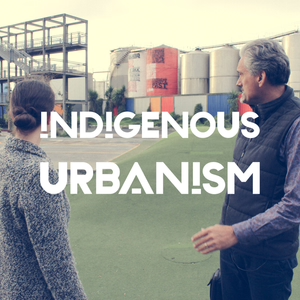
Tāmaki Makaurau Cultural Landscapes
EPISODE SUMMARY: On this episode of Indigenous Urbanism, we travel to Tāmaki Makaurau, our largest city, to look at how Māori designers are working alongside mana whenua to re-shape the city to better reflect their unique identity and culture and to create a distinctive sense of place that benefits us all.
GUESTS: Rau Hoskins, Phil Wihongi
FULL TRANSCRIPT:
Jade Kake: Tāmaki Makaurau. The land desired by many. Our nation’s largest city, and home to almost 1.6 million people. Auckland’s tribal landscape is complex, with 19 tribal groups holding mana whenua status within the wider Auckland area. The city is also our most ethnically diverse, a place that people from many different cultures call home. So, what is Auckland’s point of difference? And how do tangata whenua - the people of this place - see themselves in the City.
Rau Hoskins: So we've just arrived down here at the Wynyard quarter.
That’s architect Rau Hoskins, nō Ngāti Hau
RH: I guess the very name of the precinct is one of the issues that is the focus of our discussion, which is these colonial names. And of course Wynyard being a significant...
JK: Coloniser?
RH: Well, a military person of significance in the Northern Wars. This is of course primarily reclaimed land here, a lot of the work we've been doing in this area has been about saying well, looking at the names that applied to the foreshore, to the streams that ran out into the upper Waitematā, and to the names of the seabed. And sometimes there are known names for shellfishing beds and so on.
So, just a bit further down there, there's a shellfish bed there called Te Raukai, which remembers the significance of that site. Some of us know where freshwater meets seawater, that's where certain species of shellfish always live. Titiko - that's cockles - they do need some freshwater, and also the kōkota. Kōkota is a type of pipi. That also needs some freshwater as well. That's why in estuaries - Maketū and others - that you get such plentiful amounts of kai moana.
So, in this area here are several streams that flowed out, and Waikōkota was one of those streams that flowed out in this general area, and there's a little lane that's been named after the kōkota, called Waikōkota, just to remember the significance of that site.
And of course in this location here we've got some pretty amazing views through to Te Pae o te Raki in particular. Over there we've got Takarunga, also known as Mt Victoria, and Maungauika, also known as Takapuna, also known as North Head. And so, the tohu principle of the Te Aranga principles is really about saying, well these are incredibly important landmarks to us, and the ancestors associated with them are held in such high regard that we do need to preserve our connections to these. Not just cause it's a beautiful view, but because there's a cultural connection. And so, similarly when we look to the inland, it's very difficult to see any of the other cultural landmarks from this vantage point.
A lot of the projects that we've been doing in the Wynyard Quarter here of mapping those compass directions where significant sites are located. The harbour bridge is significant, because there's Te Onewa pā site there just below the harbour bridge, which is significant to Ngāti Paoa and other iwi as well. We're often about trying to highlight significance in the landscape which is just not known, is still held by mana whenua.
This gantry structure here, is apparently designed around the inspiration of the paparewa or the hākari stages, so that's what I understand Megan Wraight, who was involved with the project here used that structure, those traditional hākari stage structures as a method of displaying wealth, primarily the wealth in terms of food - seafood, riwai, kumara, karaka berries and so on. So, from Thames through to the North, our iwi were known to build these very large structures. Kororāreka (Russell), there was one that was measured 130 feet high, 230 feet wide, and all built with no nails, weighed down with tons and tons of food. So, some significant engineering feats. It's difficult to directly ascribe the paparewa visual identity to this structure, but that's what we understand it was inspired by.
I think this structure here is quite helpful in terms of the conversation around overt / covert, or overt vs covert approaches to design. Fair to say that, in the Māori design community and in talking with iwi mana whenua, they don't appreciate the subtle. The subtle gets lost. And when you're really trying hard to see yourselves in the built environment, you really do have to be overt. Overt as in, identifiably Māori, identifiably of this hapū, versus tacky. We've got this design aesthetic amongst our urban design and architecture community which favours the subtle. The ability for something which is too overt to become hackneyed, or too readily read, or simpl...
Next Episode
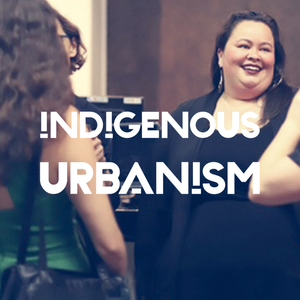
In Conversation with Elisapeta Heta
EPISODE SUMMARY: On this episode of Indigenous Urbanism, we speak with Elisapeta Heta nō Ngāti Wai, an architectural graduate working at Jasmax. Elisapeta is also an artist and academic, and has held various significant advocacy roles.
GUESTS: Elisapeta Heta
FULL TRANSCRIPT:
Jade Kake: Tēnā koutou katoa
Nau mai haere mai ki te Indigenous Urbanism, Aotearoa Edition, Episode 7.
I’m your host Jade Kake and this is Indigenous Urbanism, stories about the spaces we inhabit, and the community drivers and practitioners who are shaping those environments and decolonising through design.
On this episode of Indigenous Urbanism, we speak with Elisapeta Heta nō Ngāti Wai, an architectural graduate working at Jasmax. Elisapeta is also an artist and academic, and has held significant advocacy roles, including her previous role as Co-Chair of Architecture Women, and current role as the Ngā Aho representative to the New Zealand Institute of Architects Board.
We caught up with Elisapeta at the Jasmax offices in Parnell.
JK: Ko wai koe? Nō hea koe? Where are you from, and who are you?
Elisapeta Heta: I am from many places actually. On my father's side I'm from up north, and a little bit south of here, so nō Ngāti Wai ahau, me Waikato-Tainui, and on my mother's side I am Samoan, Tokelauan, and English. So she's first generation New Zealander, whatever that means. Her mother was born in Apia, and her father was born in Portsmouth in England. So, from everywhere. Ko Elisapeta Hinemoa Heta ahau. I'm an architectural graduate at Jasmax, but I'm also part of a roopu here called Waka Maia. We are three architectural graduates, who run a lot of the - for want of better words - Māori navigation type stuff for projects. So we have boldly given ourselves the title of Kaihautū Whaihanga, so Māori design leaders within the practice.
JK: And so you find yourself in a really large firm, being one of a few Māori practitioners. So could you talk a little bit, just about that experience.
EH: Yeah, for me, for starters, it's quite funny as a graduate I think you sort of assuming you are going out into the world begging somebody to take you on as some kind of strange liability to them, or something. But I was very deliberate about choosing to want to come and work with Jasmax. And that was partly because Jasmax had a known reputation for working on community projects that involved Māori that I was really intrigued by. A lot of that was led and run by Ivan Mercep, who's since passed away. But he had quite the legacy, effectively, with Māori communities, with Māori projects. Even though he wasn't Māori himself, and had mentored Brendan Himona and sort of a little bit at the end there as well, Rameka Tu'inukuafe, who are both my colleagues in Waka Maia. Jasmax I think, sort of had a cultural capacity, shall we say. It had an understanding. It had a bit of - when I sort of found out the history of why Jasmad began, little bit of a radical sort of beginnings, and wanting to make the city a better place. And I suppose that's considered radical sometimes.
JK: Shockingly
EH: Shockingly, yeah. Protesting against motorways being built in ridiculous places, and all sorts of things like that. So, I think Jasmax just had, there was an inbuilt sort of sense for me, from the outside looking in, that it was something I could get in on. It's hard, I think, to build cultural capacity from scratch. Knowing that there were Māori colleagues already here that were trying to make things happen, that was sort of a nice transition, I suppose. It had some momentum, it had some legs. I came on at a time that Haley Hooper, another Māori wahine, had also joined Jasmax only six months prior to me starting here, so there ended up being four of us, which was a little bit of a bubble. And we, I think in sort of a momentum, kind of riding the wave of a whole lot of things happening outside of the office. So, the first time Māori had ever met officially with the NZIA had happened at the same time, and there were talks about the kawenata which eventually comes into being later on, I suppose, in the chronology of my life. So, being here, or coming here to Jasmax was kind of wanting to push myself where I thought was really important, with the kind of powerhouse that this already had, I suppose. Nothing's perfect, everybody, every group, every collective, every office, has things they can do better. I think that's what's been pretty amazing, personally from my point of view, is the willingness of this office to actually let us roam a little bit far, and then come back, and sort of genuinely start to initiate and embed a lot of the things that we thought were important from a te ao Māori point of view into business as usual at this practice. Which is pretty amazing, steering a ship of - you know last year it was over 300 people. So, you'd think change like that would take a lo...
If you like this episode you’ll love
Episode Comments
Generate a badge
Get a badge for your website that links back to this episode
<a href="https://goodpods.com/podcasts/indigenous-urbanism-68738/t%c4%81maki-makaurau-cultural-landscapes-pt-2-3641854"> <img src="https://storage.googleapis.com/goodpods-images-bucket/badges/generic-badge-1.svg" alt="listen to tāmaki makaurau cultural landscapes pt 2 on goodpods" style="width: 225px" /> </a>
Copy
